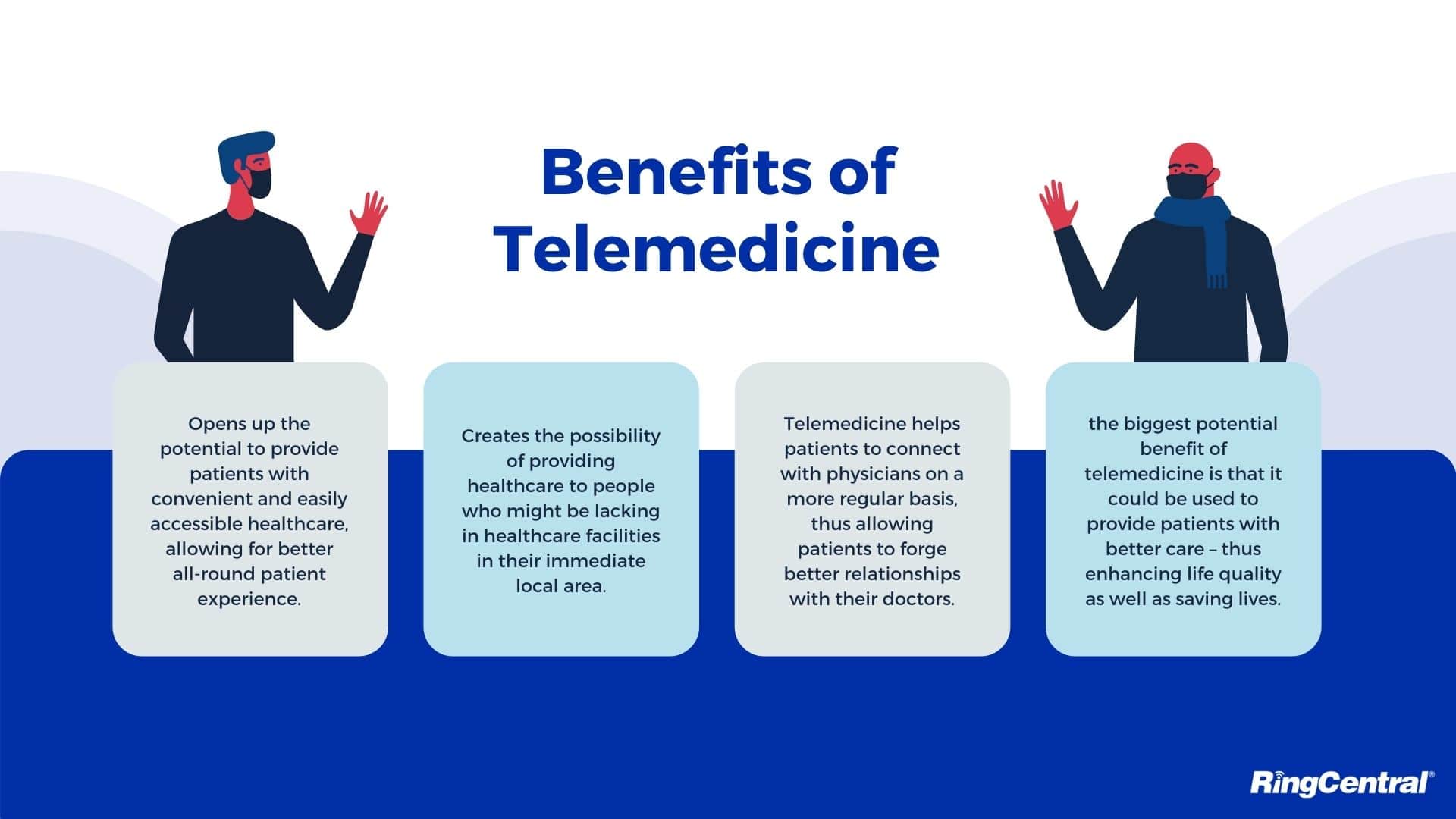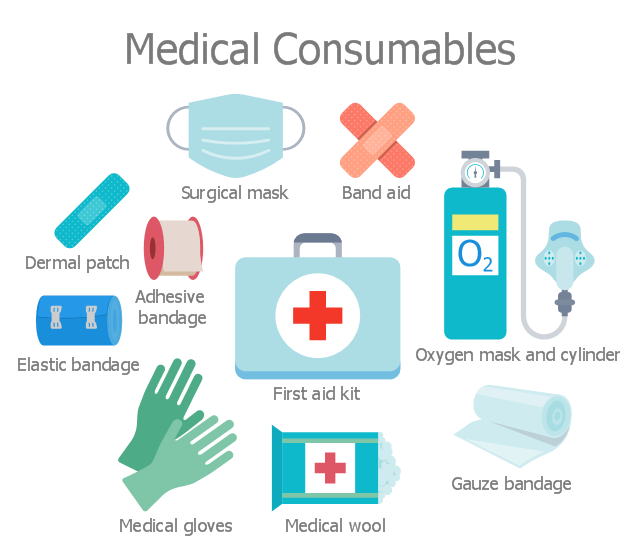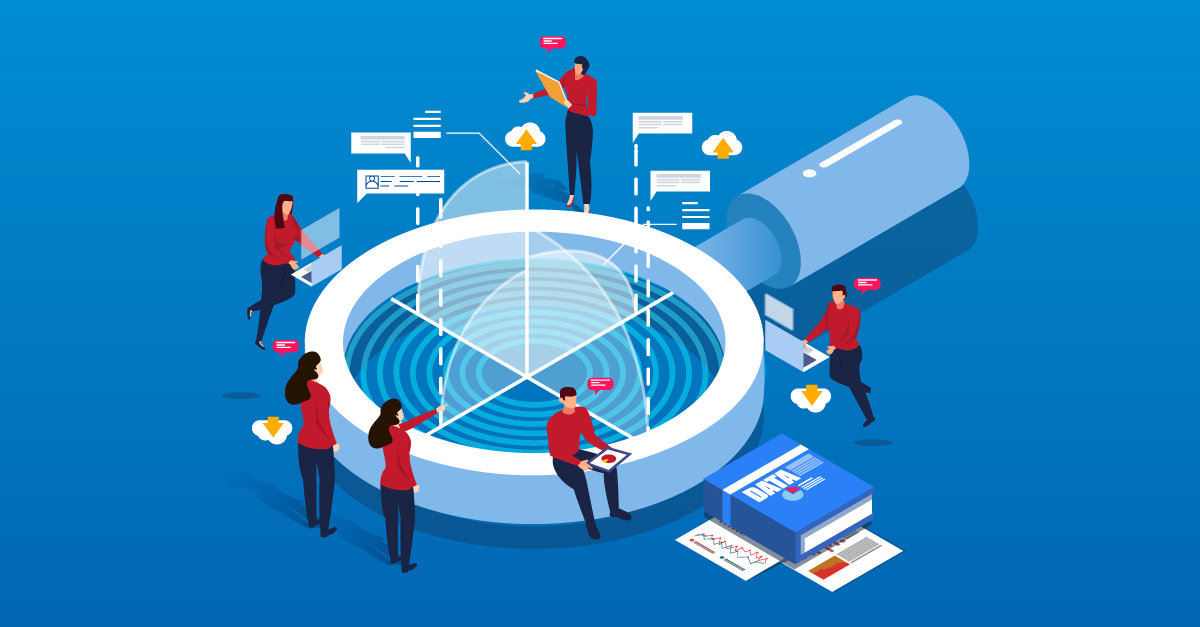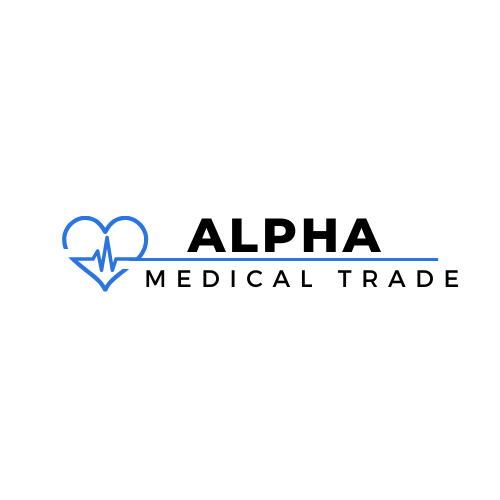
The Impact of Telemedicine
In recent years, the advent of telemedicine has revolutionized the healthcare landscape, offering unprecedented opportunities to expand access to medical services and improve patient outcomes. This transformative approach to healthcare delivery leverages technology to facilitate remote consultations, diagnosis, and treatment, breaking down traditional barriers to care and empowering patients to take control of their health like never before.
Breaking Down Geographic Barriers
One of the most significant benefits of telemedicine is its ability to transcend geographical boundaries, bringing healthcare directly to patients' fingertips regardless of their location. In rural or underserved areas where access to medical facilities may be limited, telemedicine provides a lifeline, allowing individuals to consult with healthcare professionals without the need for lengthy travel or logistical challenges. This not only improves access to care but also helps alleviate disparities in healthcare access between urban and rural communities.
Expanding Access to Specialized Care
Telemedicine has also proven invaluable in expanding access to specialized medical expertise. For patients with rare conditions or complex medical needs, accessing the appropriate specialist may have previously required extensive travel and long wait times. With telemedicine, however, patients can connect with specialists from around the world with just a few clicks, receiving timely diagnosis, treatment recommendations, and ongoing care without the need for physical proximity. This democratization of expertise ensures that patients receive the best possible care regardless of their location or local healthcare infrastructure.
Improving Patient Engagement and Compliance
Beyond its role in facilitating consultations, telemedicine has also been shown to improve patient engagement and compliance with treatment plans. Through remote monitoring and virtual check-ins, healthcare providers can maintain regular communication with patients, offering guidance, support, and encouragement along their healthcare journey. This ongoing connection fosters a sense of partnership between patients and providers, leading to improved adherence to treatment regimens, better management of chronic conditions, and ultimately, improved health outcomes.
Enhancing Healthcare Efficiency
Telemedicine not only benefits patients but also enhances the efficiency of healthcare delivery systems. By reducing the need for in-person visits for routine or non-urgent matters, telemedicine helps alleviate strain on healthcare facilities, freeing up resources and reducing wait times for those in need of in-person care. Additionally, telemedicine can streamline administrative processes, such as appointment scheduling and medical record management, leading to cost savings and operational efficiencies for healthcare organizations.
Navigating Regulatory and Technological Challenges
While the potential benefits of telemedicine are clear, its widespread adoption has not been without challenges. Regulatory frameworks governing telemedicine vary widely between jurisdictions, posing legal and compliance complexities for healthcare providers and technology companies alike. Moreover, technological barriers, such as internet connectivity issues and disparities in access to digital devices, must be addressed to ensure equitable access to telemedicine services for all populations.
Looking Ahead: The Future of Telemedicine
Despite these challenges, the future of telemedicine appears bright. As technology continues to evolve and regulatory barriers are addressed, telemedicine has the potential to become an integral component of modern healthcare delivery, complementing traditional in-person care and improving access, convenience, and outcomes for patients worldwide.
In conclusion, telemedicine represents a transformative force in modern healthcare, offering unparalleled opportunities to expand access to care, improve patient engagement, and enhance healthcare efficiency. By embracing telemedicine, we can unlock a future where quality healthcare is accessible to all, regardless of geography or circumstance.

Hospital Consumables
The Importance of Hospital Consumables
Hospital consumables encompass a diverse array of supplies, equipment, and materials that are used daily to support patient care and medical procedures. These consumables are essential for maintaining cleanliness, preventing infection, managing wounds, and ensuring the safety and comfort of patients. Whether it's administering medication, performing surgical procedures, or conducting diagnostic tests, hospital consumables are integral to the delivery of timely, effective, and compassionate healthcare services.
Key Categories of Hospital Consumables
Hospital consumables encompass a wide range of products, including but not limited to:
Personal Protective Equipment (PPE): PPE such as gloves, masks, gowns, and face shields are essential for protecting healthcare workers from exposure to infectious agents and hazardous materials. PPE plays a critical role in preventing the transmission of infections and ensuring the safety of both patients and healthcare providers.
Wound Care Products: Wound care products such as dressings, bandages, and adhesive tapes are used to manage and protect wounds, burns, and surgical incisions. These products promote healing, prevent infection, and provide comfort to patients during the recovery process.
Diagnostic Supplies: Diagnostic supplies include items such as blood collection tubes, specimen containers, and test kits used for collecting, processing, and analyzing patient samples. These supplies are essential for conducting laboratory tests, diagnostic imaging studies, and other medical investigations to aid in the diagnosis and management of medical conditions.
Infection Control Products: Infection control products such as disinfectants, antiseptics, and hand sanitizers are essential for maintaining a clean and hygienic healthcare environment. These products help prevent the spread of infectious diseases and reduce the risk of healthcare-associated infections (HAIs) among patients and staff.
Patient Care Supplies: Patient care supplies include items such as bed linens, towels, and disposable patient gowns used to ensure the comfort and well-being of patients during their hospital stay. These supplies contribute to a positive patient experience and promote dignity, privacy, and respect for individuals receiving care.
Best Practices for Hospital Consumables Management
Effective management of hospital consumables is essential for ensuring availability, quality, and cost-effectiveness in healthcare delivery. Key considerations include:
Inventory Management: Implementing efficient inventory management systems to monitor stock levels, track usage patterns, and reorder supplies as needed to prevent stockouts and minimize waste.
Standardization: Standardizing the selection and procurement of hospital consumables to streamline supply chain processes, reduce variability, and optimize resource allocation.
Quality Assurance: Establishing quality assurance protocols to ensure that hospital consumables meet regulatory standards, manufacturer specifications, and infection control guidelines.
Training and Education: Providing training and education to healthcare staff on the proper use, handling, and disposal of hospital consumables to promote safety, minimize errors, and maximize efficiency.
In conclusion, hospital consumables are essential components of healthcare delivery, supporting patient care, safety, and infection prevention in hospitals and medical facilities worldwide. By ensuring the availability, quality, and proper management of hospital consumables, healthcare providers can enhance the effectiveness, efficiency, and safety of healthcare services, ultimately improving patient outcomes and experiences.
Alpha Medical Trade is dedicated to providing top-quality hospital consumables and supplies to support healthcare providers in delivering exceptional patient care. Contact us to learn more about our comprehensive range of products and how we can meet your hospital consumables needs.

The Role of Artificial Intelligence In Medical Area
In recent years, the integration of artificial intelligence (AI) into diagnostic imaging has emerged as a game-changer in the field of healthcare. By harnessing the power of machine learning algorithms and advanced imaging technologies, AI has the potential to revolutionize the way medical conditions are diagnosed and treated, paving the way for more accurate, efficient, and personalized patient care.
Enhancing Accuracy and Efficiency
One of the most significant benefits of AI in diagnostic imaging is its ability to enhance the accuracy and efficiency of disease detection. Machine learning algorithms can analyze vast amounts of medical imaging data with unparalleled speed and precision, detecting subtle abnormalities and patterns that may be imperceptible to the human eye. By assisting radiologists and other healthcare professionals in interpreting medical images, AI can help reduce diagnostic errors, improve early detection of diseases, and expedite treatment planning, ultimately leading to better patient outcomes.
Personalized Treatment Planning
AI-driven diagnostic imaging also holds the promise of personalized treatment planning tailored to the individual characteristics of each patient. By analyzing a patient's medical history, genetic profile, and imaging data, AI algorithms can help predict disease progression, identify optimal treatment strategies, and monitor response to therapy over time. This personalized approach to healthcare enables clinicians to deliver targeted interventions that maximize efficacy while minimizing potential side effects, leading to more effective and efficient patient care.
Expanding Access to Expertise
In addition to improving diagnostic accuracy and personalized treatment planning, AI in diagnostic imaging has the potential to expand access to expertise, particularly in underserved or remote areas where access to specialized healthcare services may be limited. By providing automated image analysis and interpretation, AI can assist healthcare providers in making informed clinical decisions, even in settings where access to subspecialty radiologists may be scarce. This democratization of expertise helps ensure that patients receive timely and accurate diagnoses, regardless of their geographic location or local healthcare infrastructure.
Addressing Challenges and Ethical Considerations
Despite its transformative potential, the integration of AI into diagnostic imaging is not without challenges and ethical considerations. Issues such as data privacy, algorithm bias, and regulatory oversight must be carefully addressed to ensure the responsible and ethical use of AI in healthcare. Moreover, healthcare professionals must receive adequate training and support to effectively integrate AI technologies into their clinical practice and interpret AI-generated insights in the context of holistic patient care.
Looking Ahead: The Future of AI in Diagnostic Imaging
As AI continues to evolve and mature, its role in diagnostic imaging is poised to expand even further. Future developments may include the integration of AI-powered predictive analytics, real-time image processing, and augmented reality visualization techniques, further enhancing the capabilities of diagnostic imaging and transforming the way healthcare is delivered and experienced.
In conclusion, AI-driven diagnostic imaging represents a transformative force in modern healthcare, offering unprecedented opportunities to improve diagnostic accuracy, personalize treatment planning, and expand access to expertise. By embracing AI technologies responsibly and ethically, we can unlock a future where every patient receives timely, accurate, and personalized care, regardless of their circumstances.

Unveiling the Vital Role of Market Insights
In the dynamic landscape of the medical sector, where advancements in technology and shifts in consumer behavior continuously shape the industry's trajectory, the importance of market insight and analysis cannot be overstated. From identifying emerging trends to evaluating competitive landscapes and gauging consumer preferences, market analysis serves as a compass guiding strategic decision-making for healthcare organizations, manufacturers, and service providers alike. In this article, we delve into the significance of market insight and analysis in navigating the complexities of the medical sector and driving sustainable growth and innovation.
Understanding Market Dynamics
At the heart of effective market insight and analysis lies a deep understanding of market dynamics. By examining factors such as demographic trends, regulatory changes, technological advancements, and economic conditions, healthcare stakeholders can gain valuable insights into the forces shaping the industry landscape. This understanding enables organizations to anticipate market shifts, identify growth opportunities, and mitigate potential risks, ensuring agility and adaptability in a rapidly evolving environment.
Identifying Emerging Trends and Opportunities
Market insight and analysis play a pivotal role in identifying emerging trends and opportunities within the medical sector. Whether it's the rise of telemedicine, the growing demand for personalized medicine, or the increasing focus on preventative healthcare, staying abreast of industry trends is essential for organizations seeking to remain competitive and relevant. By proactively identifying and capitalizing on emerging opportunities, healthcare organizations can position themselves as leaders in innovation and meet the evolving needs of patients and consumers.
Evaluating Competitive Landscapes
In an increasingly competitive market, understanding the competitive landscape is essential for success. Market analysis enables healthcare organizations to assess the strengths, weaknesses, opportunities, and threats posed by competitors, allowing them to refine their strategies and differentiate themselves in the marketplace. By benchmarking against industry peers, identifying gaps in the market, and monitoring competitor activities, organizations can gain a competitive edge and enhance their market position.
Informing Strategic Decision-Making
Perhaps most importantly, market insight and analysis serve as a cornerstone for strategic decision-making across all facets of the medical sector. Whether it's launching a new product, entering a new market, or expanding service offerings, informed decisions rooted in robust market analysis are more likely to yield positive outcomes. By leveraging market data and insights, organizations can allocate resources effectively, mitigate risks, and capitalize on growth opportunities, ultimately driving sustainable business success.
Enhancing Customer Understanding and Engagement
In addition to informing internal decision-making, market insight and analysis are invaluable for understanding and engaging with customers. By gathering feedback, analyzing consumer behavior, and monitoring satisfaction levels, healthcare organizations can tailor their products and services to meet the evolving needs and preferences of their target audience. This customer-centric approach not only fosters loyalty and retention but also drives innovation and continuous improvement, ensuring that organizations remain responsive to changing market dynamics.
Conclusion: Harnessing the Power of Market Insights and Analysis
In conclusion, market insight and analysis are indispensable tools for navigating the complexities of the medical sector and driving sustainable growth and innovation. By understanding market dynamics, identifying emerging trends, evaluating competitive landscapes, informing strategic decision-making, and enhancing customer understanding and engagement, healthcare organizations can position themselves for success in an ever-evolving industry landscape. As the medical sector continues to evolve, organizations that prioritize market insight and analysis will be well-positioned to thrive amidst uncertainty and seize opportunities for advancement and innovation.




